Why Is Patek Philippe So Expensive?
Renowned for their exquisite craftsmanship and commanding prices that often reach stratospheric levels, Patek Philippe watches stand at the pinnacle of the luxury timepiece market. But what elements combine to make these watches so costly? The answer is a mix of factors: unmatched craftsmanship, restricted production, historical renown, and cutting-edge technology. In this piece, we'll explore the realm of Patek Philippe, examining the components that drive up their prices and ensure their lasting value.
Historical Prestige and Brand Heritage
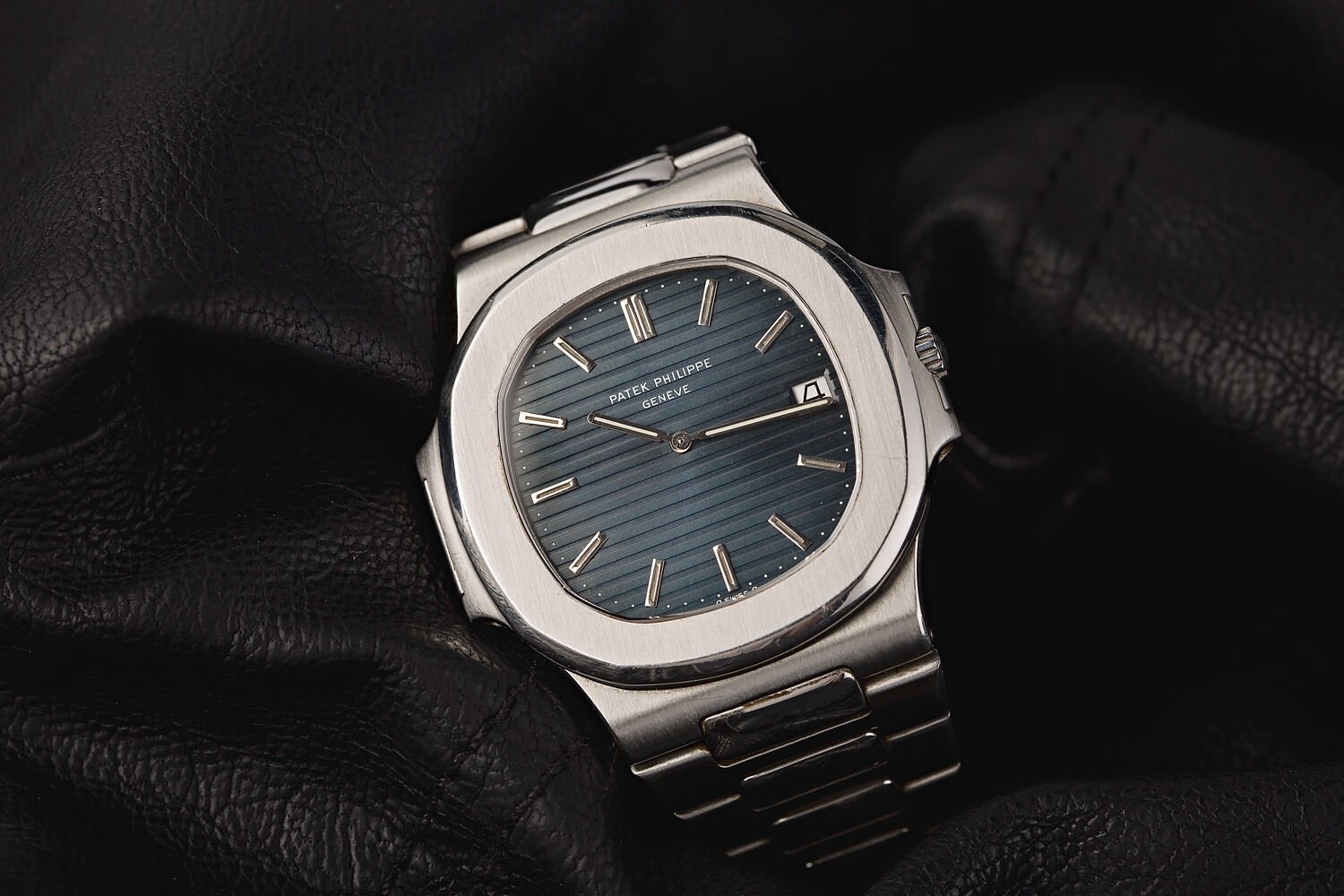
The standing for excellence is deeply ingrained in Patek Philippe history and lasting legacy. Established in 1839, the company has consistently advanced the art of watchmaking, securing a position among the world's most esteemed brands. This historical importance significantly influences the brand's perceived worth and plays a major role in the high costs of its watches.
Founding and Early Years of Patek Philippe
The journey of Patek Philippe began in 1839 with the establishment of Patek, Czapek & Cie in Geneva, Switzerland by Polish immigrants Antoni Patek and Franciszek Czapek. This foundation marked the start of what would evolve into one of the most esteemed names in the watchmaking industry. In 1845, Czapek departed from the company, and Patek formed a partnership with French watchmaker Adrien Philippe, leading to the creation of Patek Philippe & Cie in 1851.
From its beginning, Patek Philippe aimed to produce watches of unparalleled quality and innovation. The company quickly earned acclaim for its accuracy and complex features, establishing itself as a leader in the domain of haute horlogerie. This early dedication to excellence laid the groundwork for Patek Philippe's future achievements and contributed to the brand's lasting reputation.
Notable Milestones and Innovations
Throughout its long history, Patek Philippe has been at the forefront of watchmaking innovations, significantly influencing the industry. In 1868, the company introduced the first Swiss wristwatch for Countess Koscowicz of Hungary, marking a pivotal moment in the transition from pocket watches to wristwatches. This innovative approach continued with the creation of the perpetual calendar mechanism in 1889 and the first split-seconds chronograph wristwatch in 1923.
Patek Philippe's catalog of innovations is vast, including the introduction of the first wristwatch with a perpetual calendar in 1925, the first electronic clock in 1956, and the incorporation of silicon components in the 21st century. Each of these achievements has not only advanced the field of watchmaking but has also solidified Patek Philippe's status as a leader in the industry, explaining the high prices associated with their watches.
Royal and Celebrity Clientele Throughout History
Patek Philippe's exceptional quality and prestige have drawn a distinguished clientele throughout its history, including royalty, political figures, and cultural icons. Queen Victoria and Prince Albert were among the early admirers, purchasing Patek Philippe watches in 1851. Other notable patrons have included Pope Pius IX, Leo Tolstoy, Marie Curie, and Albert Einstein.
This distinguished list of clients has persisted into the modern era, with Patek Philippe watches adorning the wrists of world leaders, business moguls, and celebrities. The association with such prominent figures enhances the brand's prestige and exclusivity, contributing to the high demand and prices for Patek Philippe watches. Owning a Patek Philippe is more than just about telling time; it's about being part of an exclusive community of discerning individuals who value the pinnacle of watchmaking craftsmanship.
Unparalleled Craftsmanship
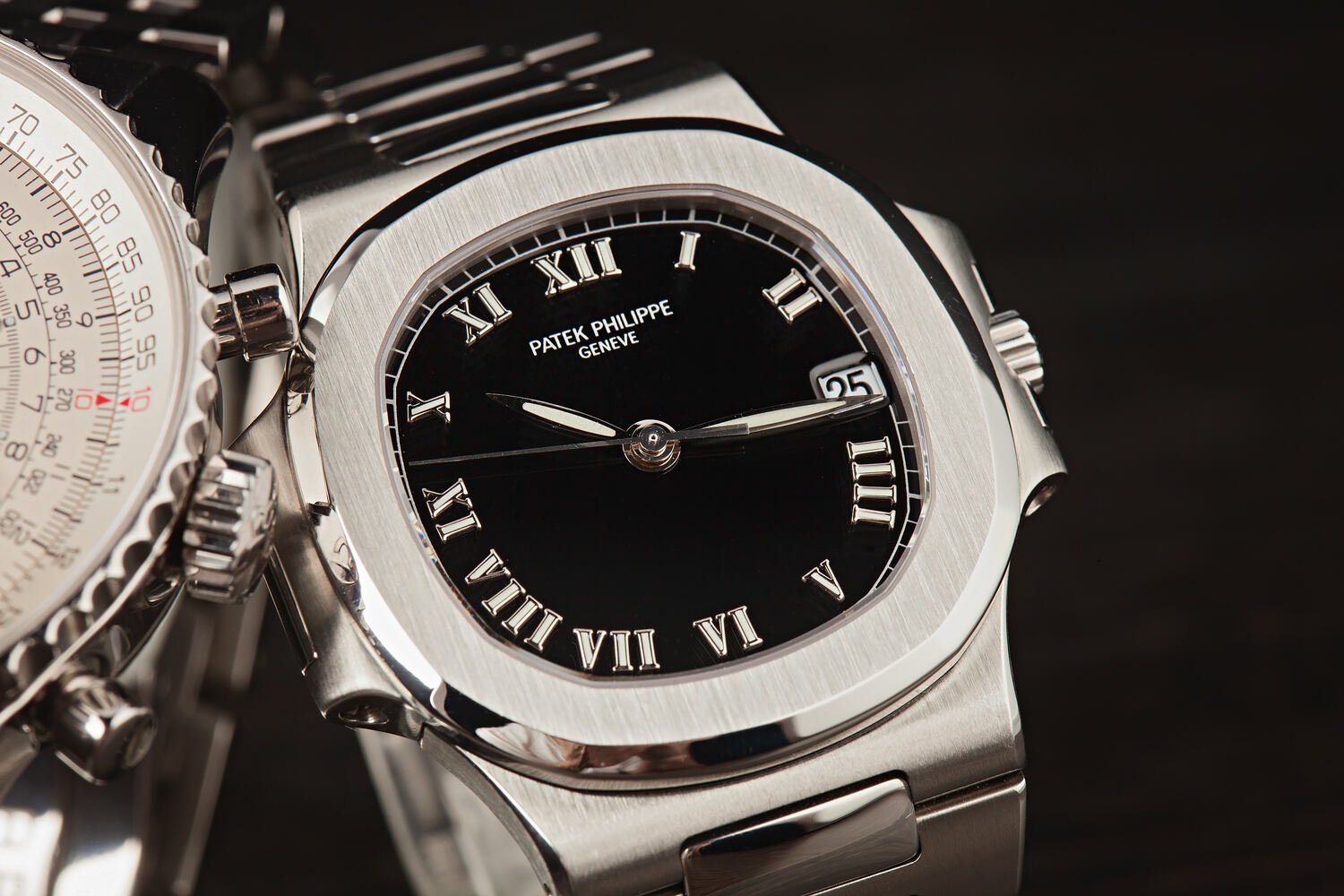
At the core of Patek Philippe's reputation and pricing lies its dedication to unparalleled craftsmanship. Each Patek Philippe watch is a masterpiece of horological engineering, blending traditional methods with the latest technology. This commitment to excellence and accuracy is evident in every detail of their watches, from the movements to the cases and dials.
In-House Movement Manufacturing
Patek Philippe is among the select few watchmakers that design and produce its movements entirely in-house. This approach to vertical integration ensures complete oversight over the quality and precision of each component. The company's movement production in Plan-les-Ouates, Geneva, is a cutting-edge facility where traditional craftsmanship meets contemporary technology.
Every Patek Philippe movement is carefully crafted by skilled artisans, many of whom have dedicated decades to their craft. From the initial design phase to the final assembly, each step is executed with the highest standards. This level of control and meticulous attention to detail guarantees that every Patek Philippe watch meets the brand's stringent quality criteria, explaining the high prices associated with such craftsmanship.
Hand-Finishing and Decoration Techniques
A key feature of a Patek Philippe watch is the exceptional craftsmanship that goes into each part. Even the parts that are not visible receive the same level of care, following the brand's belief that every part of a watch, whether seen or not, is equally important.
Techniques like Côtes de Genève, perlage, and anglage are meticulously applied by hand to produce beautiful visual effects and ensure the watch's movement runs smoothly. Every gear wheel is carefully buffed, and each screw is meticulously polished. This attention to detail not only makes the watch more visually appealing but also helps in its durability and accuracy. The extensive hours spent hand-crafting each Patek Philippe watch are a major reason for their high price.
Time Invested in Creating Each Watch
The process of making a Patek Philippe watch is a lengthy one, ranging from a few months to several years, depending on the complexity of the watch. For example, a simpler Calatrava watch could take nine months to complete, while a more complex one might take up to two years.
This extended production period is a result of the brand's strict commitment to quality and precision. Each part is made, polished, and put together by hand, with many quality checks carried out along the way. The movements are thoroughly tested for accuracy and reliability before they are put into the case. This careful attention to detail and the significant amount of time spent on each watch are major reasons for the high price of Patek Philippe watches.
Limited Production and Exclusivity
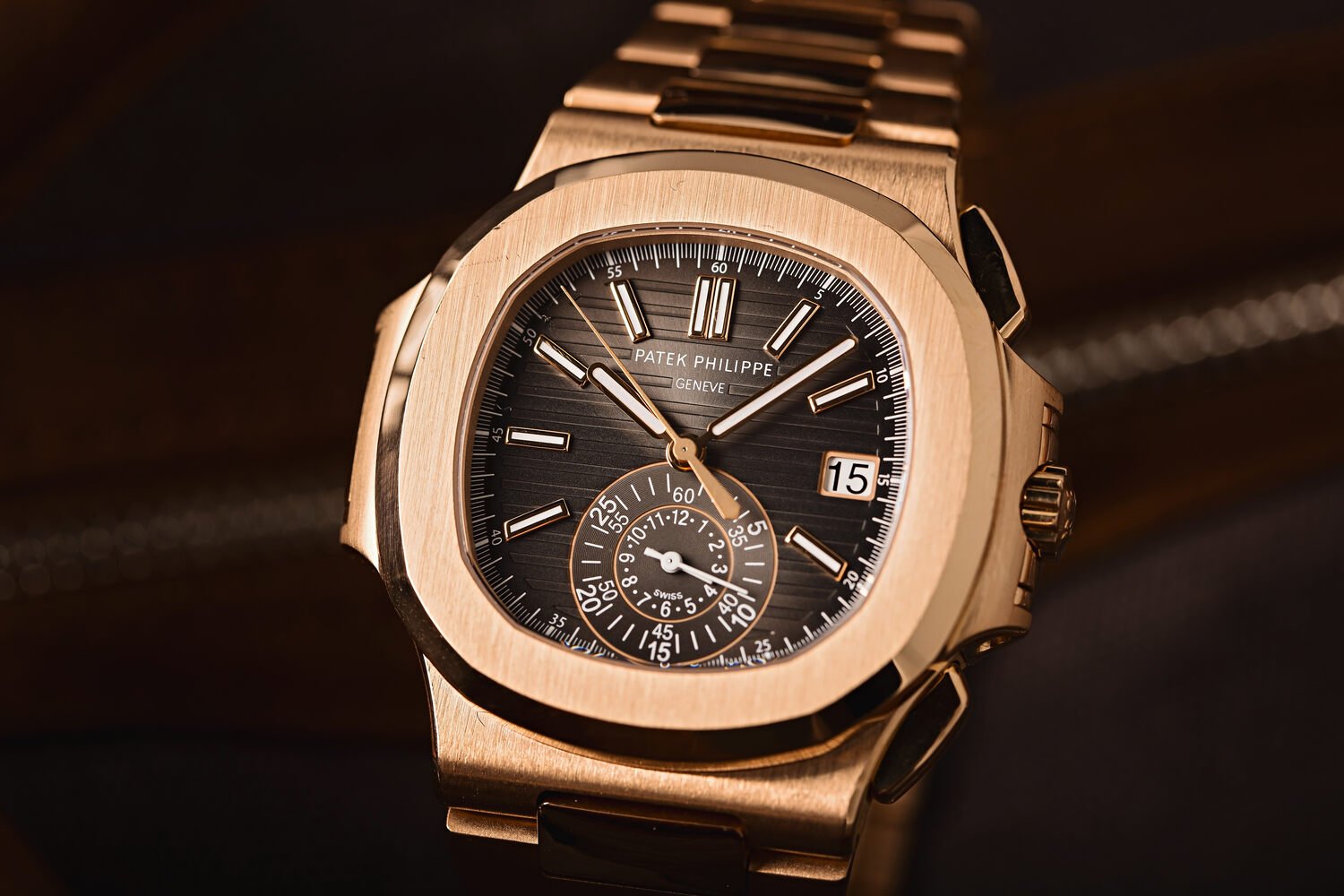
The high prices of Patek Philippe watches also stem from the brand's dedication to uniqueness through its restricted production. Unlike numerous luxury watch brands that churn out hundreds of thousands of pieces each year, Patek Philippe deliberately keeps its production levels low. This scarcity not only boosts demand but also guarantees that each Patek Philippe watch is a rare and valuable item.
It's believed that Patek Philippe produces around 60,000 watches annually, a small fraction compared to other luxury watch brands like Rolex (estimated at about 1 million pieces a year) or even top-tier manufacturers such as Audemars Piguet (around 40,000). This limited output enables Patek Philippe to uphold stringent quality standards and preserve the exclusivity that its clientele values. The rarity of Patek Philippe watches plays a significant role in their high market value and appeal to collectors.
The limited availability of Patek Philippe watches often leads to extended waiting lists for sought-after models, especially those that are complex or in limited editions. It's not unusual for collectors to wait several years to buy your first Patek Philippe model. This waiting period adds to the allure and desirability of the brand, turning owning a Patek Philippe watch into a significant accomplishment.
Patek Philippe controls its distribution network, selling its watches through exclusive dealers and its own boutiques. This approach allows the brand to maintain oversight over the display and pricing of its products, ensuring that the customer experience matches the brand's elite image. The limited supply and controlled distribution further underscore the exclusivity of Patek Philippe watches, justifying their premium prices in the luxury watch market.
Investment in Research and Development
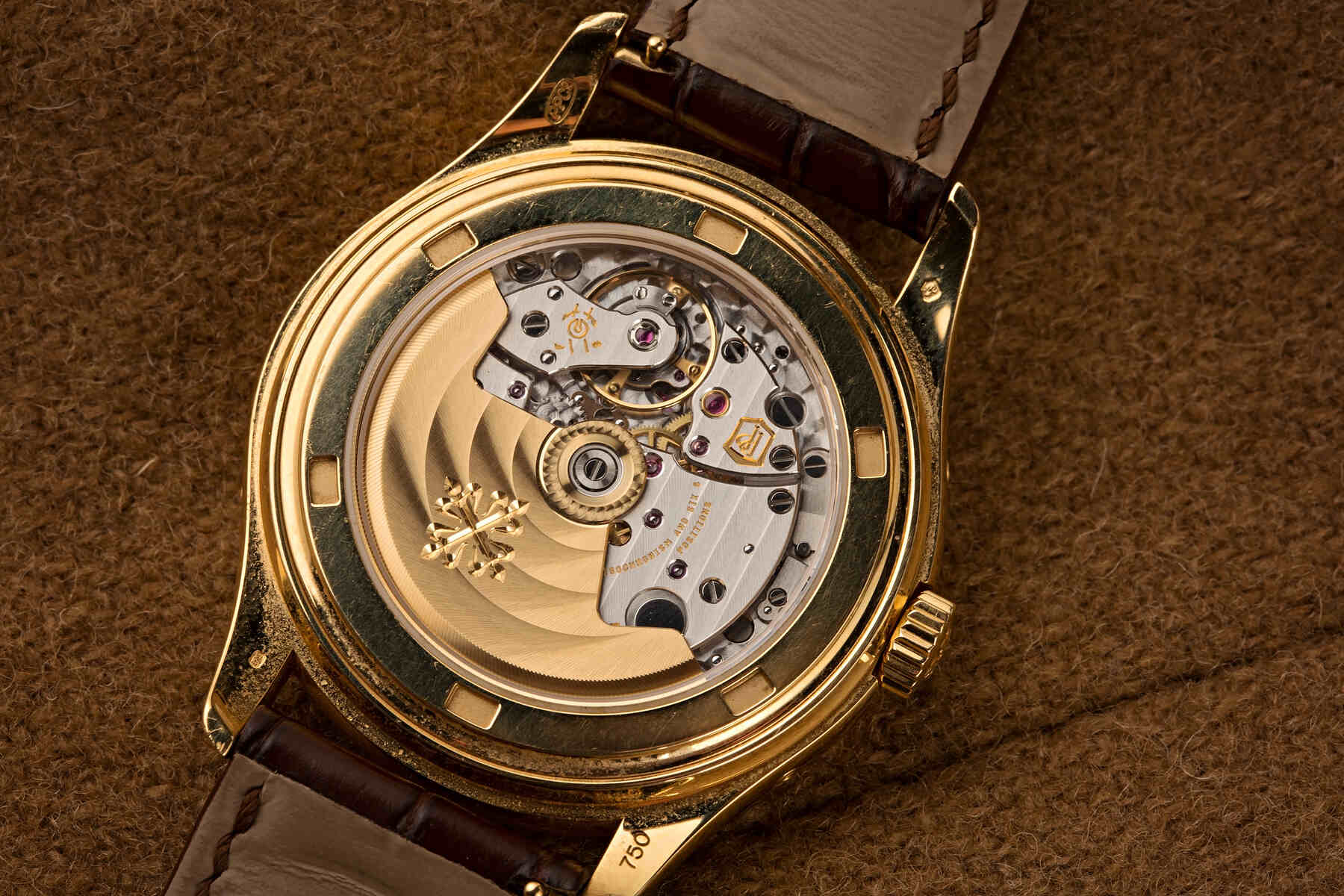
Patek Philippe's dedication to pushing the limits of watchmaking technology is another significant reason for the high price tags on their watches. The brand pours a lot of money into research and development, constantly striving to achieve new heights in mechanical watch technology. This relentless quest for perfection keeps Patek Philippe at the leading edge of watchmaking innovation.
Over its long history, Patek Philippe has introduced many game-changing advancements in the field of watchmaking. These breakthroughs include the perpetual calendar, the split-second chronograph, and the minute repeater. More recently, the brand has led the way in incorporating sophisticated materials like silicon into watch movements, enhancing precision and decreasing the necessity for maintenance. Each of these achievements is the culmination of years of research and development, with the expenses being passed on to the watch's price.
The brand has its own specialized research and development division, filled with some of the most skilled watchmakers and engineers in the business. This group works non-stop to create new watch features, refine current mechanisms, and investigate the latest materials and production methods. Patek Philippe's exclusive technologies, such as the Gyromax balance and the Spiromax balance spring, are the outcomes of this continuous investment in research and development. The significant resources dedicated to these projects justify the high prices of Patek Philippe watches.
Use of Precious Materials
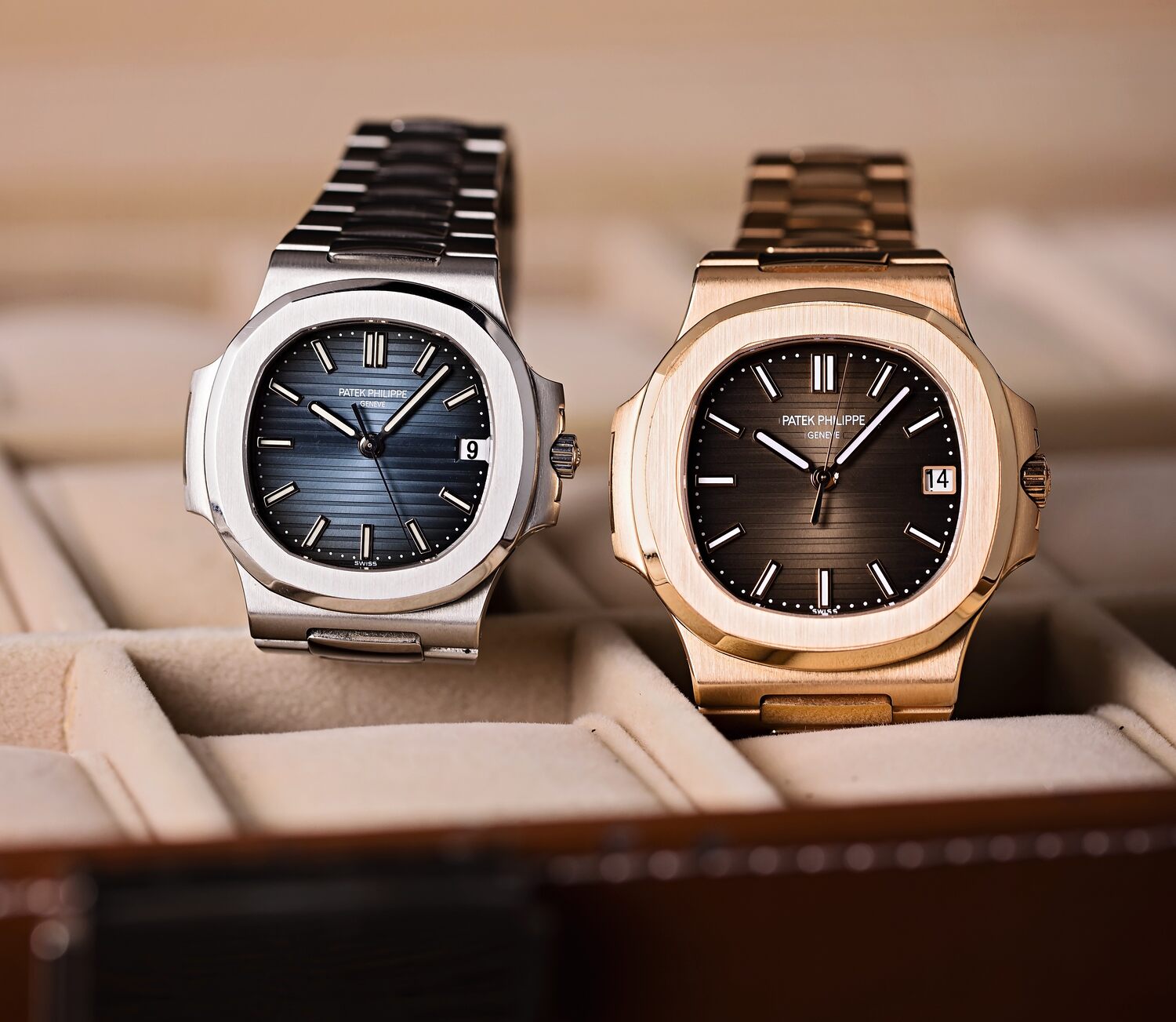
Patek Philippe's dedication to superior quality is evident in the selection of materials for their watches. The brand is recognized for choosing only the most precious and high-quality materials for their timepieces, from the outer casings and dials to the tiniest parts of the mechanism. This strict policy on material choice plays a major role in the high cost of Patek Philippe watches.
High-Grade Metals and Alloys
Patek Philippe mainly utilizes precious metals such as 18k gold (in various shades including yellow, white, and rose) and platinum for their watch casings. These materials are valued not just for their worth but also for their durability and luxurious feel. The brand's commitment to excellence is seen in its production of its own gold alloys, ensuring uniformity in color and purity throughout its collections.
Even in the case of stainless-steel watches, Patek Philippe opts for a superior alloy that offers outstanding resistance to corrosion and a beautiful appearance. The company's meticulous attention to detail is also reflected in the design of the bracelet and clasp, which are often made from the same high-value materials as the case, further increasing the value and cost of the watch.
Gemstones and Diamond Settings
A significant number of Patek Philippe watches, especially those in their premium jewelry line, showcase elaborate settings featuring precious gemstones and diamonds. The brand uses only the finest quality stones, often from specific mines known for their exceptional quality. Each stone is carefully chosen for its color, clarity, and cut to meet Patek Philippe's stringent criteria.
The process of setting these valuable stones is a craft, requiring the expertise of highly skilled artisans. Patek Philippe employs master jewelers who hand-set each stone, creating intricate designs that enhance the watch's beauty. This level of craftsmanship and the use of high-quality gemstones significantly contribute to the high prices of these luxurious timepieces.
Rare and Exotic Dial Materials
Patek Philippe is celebrated for its elaborate dial designs, which often incorporate unique and rare materials. These can range from mother-of-pearl to enamel, wood marquetry, and even meteorite. The incorporation of these materials not only adds to the watch's visual appeal but also demands specialized skills and techniques to work with.
For example, the enamel dials at Patek Philippe are created using the ancient technique of grand feu enameling, a process that involves multiple high-temperature firings. This method is so demanding that a large percentage of dials are discarded due to flaws. The scarcity of these materials and the expertise required to work with them significantly increase the value of Patek Philippe watches, driving up their prices.
Complexity of Movements and Complications
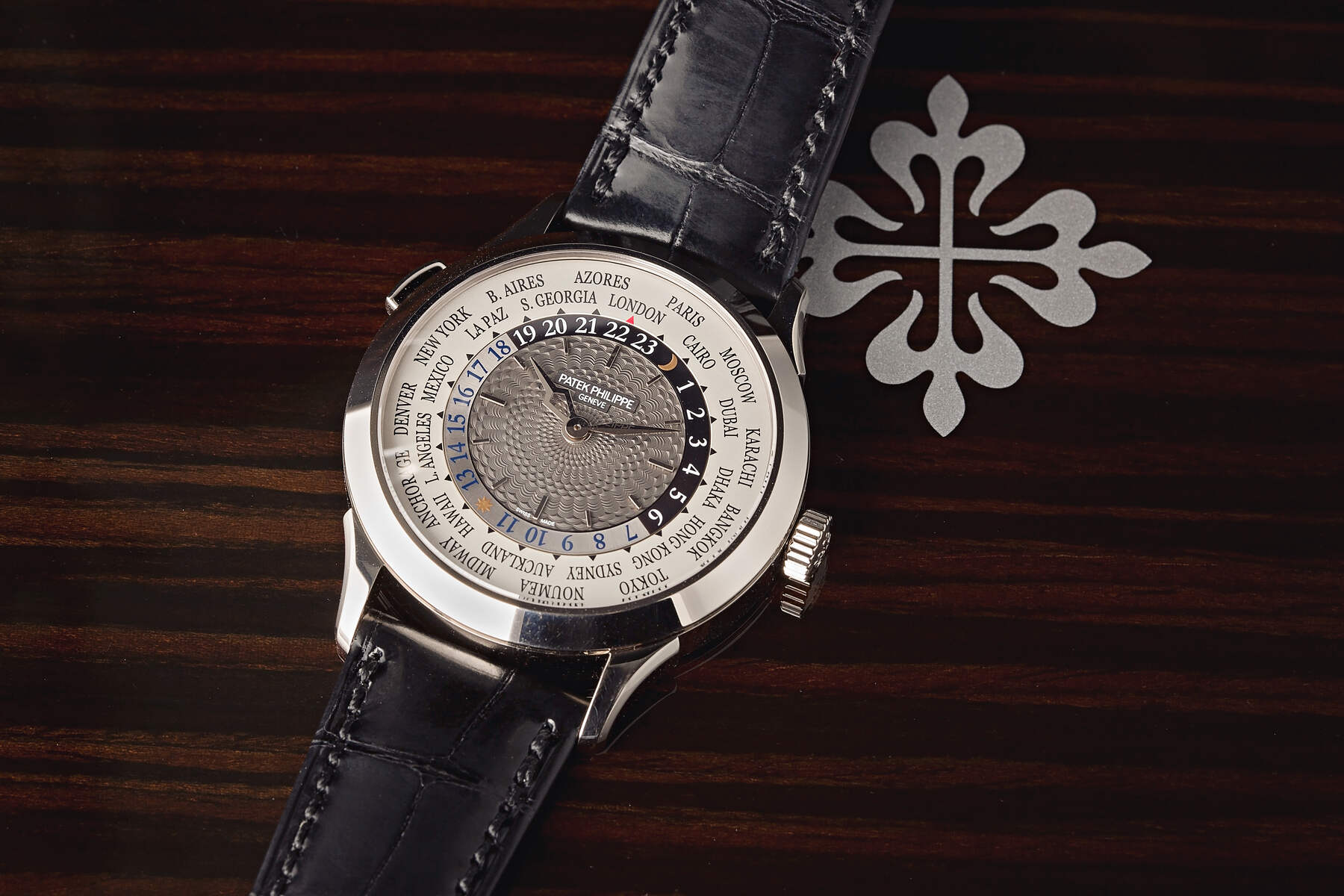
The high prices of Patek Philippe watches can be largely attributed to their reputation for crafting some of the most complex timepieces in the world. The brand is celebrated for its expertise in creating the Patek complications - additional features beyond basic timekeeping. These complex mechanisms not only demonstrate the highest level of watchmaking skill but also demand a significant amount of time and knowledge to develop, thereby increasing the cost of the final product.
Overview of Patek Philippe's Most Complex Watches
Patek Philippe's elaborate complications represent the pinnacle of horological achievement. These watches often integrate multiple advanced functions, including perpetual calendars, minute repeaters, and split-second chronographs. The Grandmaster Chime, unveiled for the company's 175th anniversary, is recognized as one of the most intricate wristwatches ever made, featuring 20 complications and two dials.
Other notable complex watches include the Sky Moon Tourbillon, which merges a minute repeater with a perpetual calendar and celestial chart, and the World Time Minute Repeater, which announces the local time in any of the 24 time zones. These engineering marvels of artistry can take years to perfect, with prices often exceeding millions of dollars.
Time and Skill Required to Assemble Complicated Movements
Constructing a complex Patek Philippe movement is a meticulous process that requires outstanding skill and patience. Watchmakers who specialize in complications typically spend years refining their abilities before they are entrusted with the task of assembling these intricate mechanisms. The process involves handling minuscule components, some of which are barely visible to the naked eye, with extreme precision.
For a grand complication, the assembly process can span several months. Each component must be carefully adjusted and aligned to guarantee flawless operation. The watchmaker must also ensure that the various complications work in harmony with each other. This level of expertise and the time invested in the assembly significantly contribute to the high cost of complex Patek Philippe watches.
Testing and Quality Control Processes
Patek Philippe's dedication to excellence is evident in their thorough testing and quality assurance procedures. Each movement is subjected to extensive testing at various stages of production, which can last several weeks. These tests evaluate accuracy, power reserve, and the proper functioning of all complications under various conditions.
For complex watches, the testing process is even more stringent. Minute repeaters, for example, undergo tests not only for their functionality but also for the quality and clarity of their chimes. Perpetual calendars are put through accelerated time simulations to ensure they accurately display the date for centuries to come. This meticulous attention to quality control is a crucial factor in Patek Philippe's premium pricing, as it ensures that each watch meets the brand's exacting standards.
The Patek Philippe Seal
The Patek Philippe Seal, unveiled in 2009, stands as a symbol of unparalleled excellence that surpasses the conventional certifications of the industry. This exclusive emblem signifies Patek Philippe's dedication to upholding the utmost standards in every facet of watchmaking, from the mechanism to the case, dial, and even the post-purchase support. The seal is a reflection of the brand's relentless pursuit of perfection and is crucial in justifying the elevated prices of their watches.
To receive the Patek Philippe Seal, a watch must satisfy a rigorous set of criteria that includes both technical and visual aspects. These standards are more demanding than those of other industry awards like the Geneva Seal. For example, mechanical movements need to achieve a precision of -3/+2 seconds per day for those with a diameter of 20mm or more, and -5/+4 seconds per day for those with smaller diameters. This level of precision is beyond what COSC (the official Swiss chronometer testing institute) requires.
The Patek Philippe Seal distinguishes itself from other industry awards by its all-encompassing nature. While awards such as the Geneva Seal focus mainly on the finishing of the movement, the Patek Philippe Seal covers the entire watch. It establishes criteria for the quality of external parts like the case, dial, and hands, as well as for the accuracy and functionality of any additional features. The seal also ensures that all Patek Philippe watches, including those from the past, receive lifelong maintenance and restoration services.
The strict requirements of the Patek Philippe Seal significantly affect the production costs, which in turn influences the pricing of the watches. Achieving and maintaining these high standards demands considerable investment in skilled workers, cutting-edge technology, and premium materials. The seal also requires thorough testing and quality assurance procedures, which increase the time and resources needed to produce each watch. These factors contribute to the higher prices of Patek Philippe watches, as customers are assured of purchasing a product that meets the most stringent industry standards.
Marketing and Brand Positioning
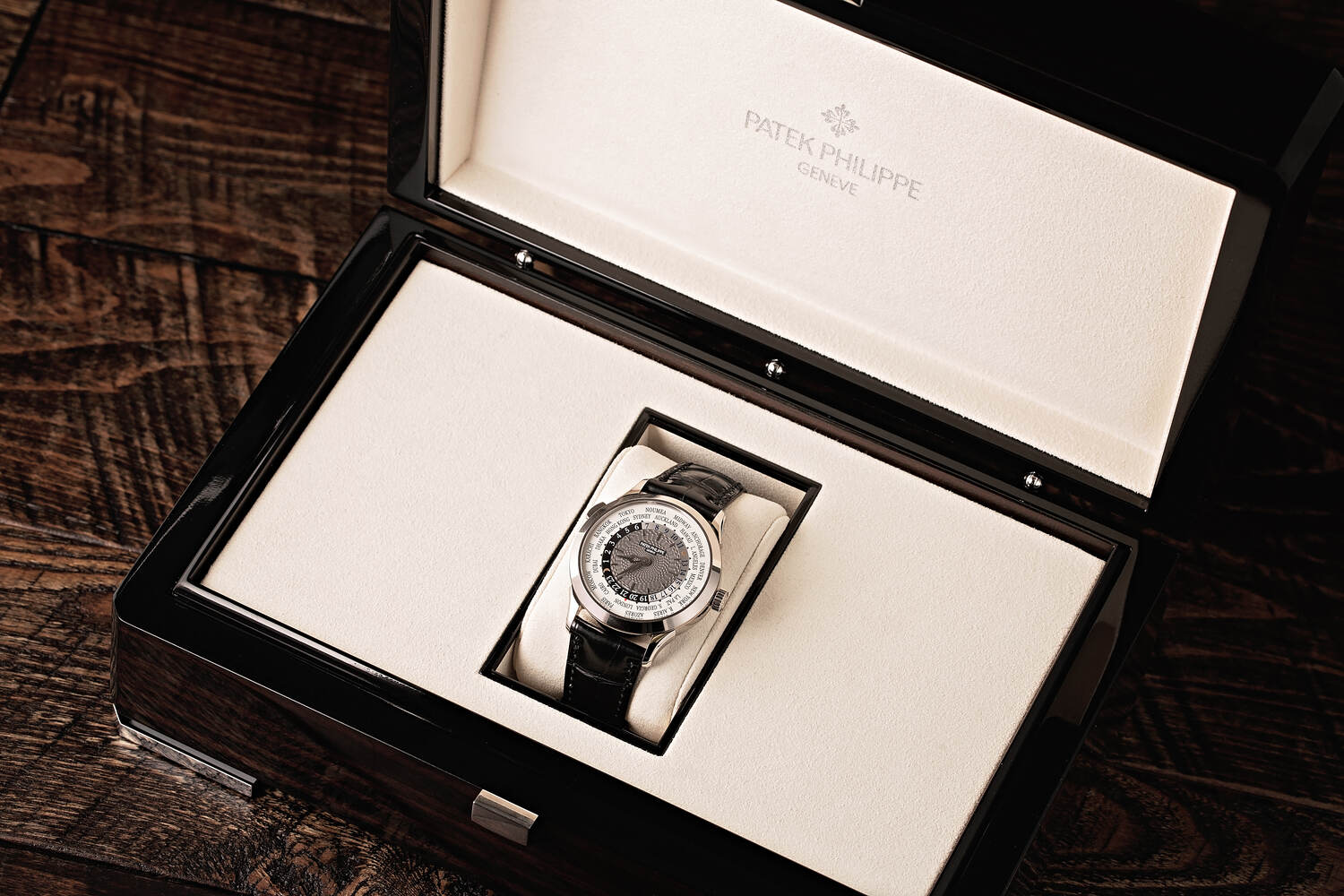
Patek Philippe's approach to marketing is as sophisticated and unique as its watches. Unlike numerous high-end brands that rely on extensive advertising, Patek Philippe adopts a more nuanced strategy. The brand's well-known saying, "You never actually own a Patek Philippe. You merely look after it for the next generation,” captures their marketing ethos - highlighting tradition, durability, and the concept of Patek Philippe watches as heirlooms.
The brand's promotional efforts are usually subtle and refined, featuring family scenes spanning generations that underscore the notion of Patek Philippe watches as valuable heirlooms. These promotions are seen in select upscale magazines and venues, aimed at a sophisticated audience. This selective strategy enables Patek Philippe to preserve its sense of exclusivity while attracting its target market.
Patek Philippe is positioned at the pinnacle of luxury watchmaking. The brand is often mentioned in the same breath as Vacheron Constantin and Audemars Piguet watches as part of the "Holy Trinity" of Swiss watchmaking. This status is not only reinforced by the quality of their watches but also by their limited production, selective distribution, and association with the elite. Patek Philippe does not follow fleeting trends or aim for mass appeal; instead, it focuses on enduring elegance and excellence in horology.
The brand's relationship with its retail partners and customers also plays a role in its positioning. Patek Philippe meticulously chooses its authorized dealers, making sure they can offer the level of service and expertise that matches the brand's standards. The company also organizes exclusive gatherings for collectors and aficionados, creating a community and exclusivity among Patek Philippe owners.
This meticulously crafted brand image significantly influences its pricing strategy. The perception of Patek Philippe as the supreme luxury watch brand allows the company to set higher prices for its watches. Customers are not merely purchasing a watch; they are investing in the prestige, history, and exclusivity that the Patek Philippe name symbolizes. This brand value is crucial in explaining the high prices of Patek Philippe watches in the luxury segment.
Investment Value and Resale Market

Patek Philippe timepieces are celebrated not just for their excellence in horology but also for their potential to appreciate in worth. The brand's watches frequently maintain or rise in value over the years, making them appealing to both collectors and investors. This reputation for solid appreciation in value plays a role in the high starting prices of Patek Philippe watches, as purchasers consider the possibility of future gains.
Performance of Patek Philippe Watches in Auctions
Patek Philippe watches have a rich history of setting record-breaking sales prices. The brand consistently ranks at the top of lists for the most expensive watches ever sold, with some rare or historically significant pieces commanding tens of millions of dollars. For example, the Patek Philippe Grandmaster Chime Ref. 6300A-010 was sold for $31.19 million at a charity auction in 2019, establishing a new record for a wristwatch.
Although these exorbitant prices are reserved for extremely rare pieces, even more common Patek Philippe watches also do well in sales. Vintage Patek Philippe watches, especially those with complex designs or unique characteristics, are in high demand among collectors. This robust performance in sales further solidifies the brand's reputation for retaining and appreciating value, justifying the high initial costs of their watches.
Appreciation of Value Over Time
Several Patek Philippe models have demonstrated significant increases in value over time. This is especially true for certain models that have been discontinued or are limited editions, which can experience substantial price jumps in the secondary market. For instance, the Nautilus Ref. 5711, which was discontinued in 2021, saw its value surge to several times its retail price.
It's crucial to mention that not every Patek Philippe watch will see a rise in value, and past success doesn't ensure future outcomes. However, Patek's consistent record of retaining value is notable compared to many other luxury watch brands. This potential for appreciation is considered in the initial pricing of Patek Philippe watches, as buyers are prepared to pay a premium for a watch that may increase in value over time.
Collectability Factor
The ability to collect Patek Philippe watches plays a crucial role in their elevated prices and robust resale worth. The brand's restricted production levels, along with its extensive history of pioneering in horology, form an ideal environment for collectability. Some models, intricate features, or even particular serial numbers can become extremely coveted by collectors, increasing their worth in the secondary market.
Patek Philippe's yearly exclusive releases, often marking important milestones or anniversaries, are especially coveted by collectors. These watches are made in limited quantities and often showcase distinctive designs or complications, turning them into coveted collector's pieces. The eagerness and demand for these exclusive releases enhance the brand's prestige and help sustain high prices throughout their entire collection.
After-Sales Service and Support

Patek Philippe's dedication to their watches goes well beyond just selling them, offering a wide range of after-sales services that are included in the watch's price. This extensive support is a major selling point for the brand, making their watches more appealing despite their high upfront costs.
At the heart of Patek Philippe's after-sales care is their promise to service and repair any watch they've made, no matter how old it is. This promise ensures that even the most antique Patek Philippe watches can remain in excellent condition, preserving their worth and functionality over many generations. The expense of providing this continuous support is considerable, which is why the watches are initially priced so high.
Patek Philippe also provides detailed repair services for their older watches. The company keeps a stock of parts for all their historical models and has expert craftsmen who are skilled in the art of traditional watchmaking. This capability allows them to accurately repair and keep in good condition even the rarest and oldest Patek Philippe watches. The skill to repair and maintain these vintage watches increases their desirability and value, making the high prices of new Patek Philippe watches more reasonable.
The financial costs of this ongoing support are significant. Keeping the necessary expertise, facilities, and parts inventory to maintain and repair watches that have been around for over 180 years of production demands a lot of investment. This promise of continuous support is a major reason why Patek Philippe watches are priced so high, as it guarantees that the investment made by buyers will be safeguarded and preserved for future generations.
In addition to the comprehensive after-sales support provided by Patek Philippe, owners can take several steps to maintain their timepieces and potentially enhance their value. From regular cleaning with a soft to avoiding extreme temperatures and magnetic fields, the combination of these personal care practices with Patek Philippe's expert servicing, owners can ensure their timepieces remain in pristine condition, potentially appreciating in value over time.
Comparison with Other Luxury Watch Brands
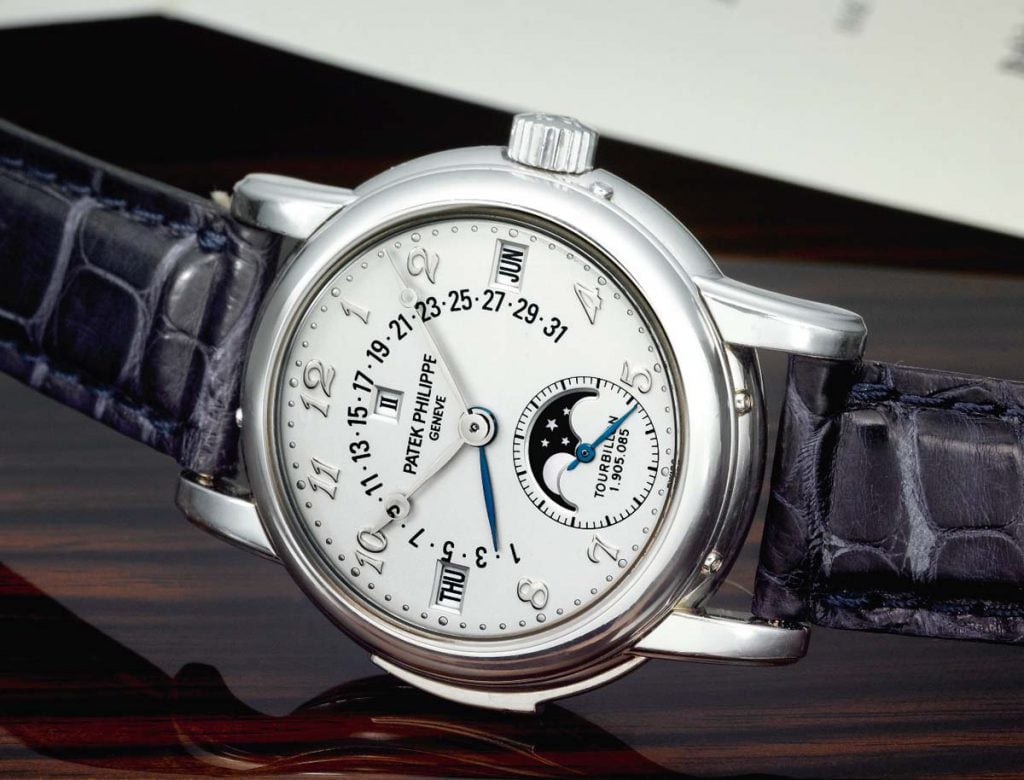
To fully understand why Patek Philippe watches command such high prices, it's helpful to compare them with other luxury watch brands. This analysis sheds light on the distinctive features of Patek Philippe that support their high-end status in the market.
Price Points of Comparable High-End Watches
When it comes to pricing, Patek Philippe watches are consistently among the most costly in the world. Basic watches, like the Patek Philippe Calatrava, can start at $20,000, while more complex models can reach over $100,000. In contrast, basic watches from brands such as Rolex or Omega typically begin around $5,000 to $10,000.
At the top tier of the market, the intricate designs of Patek Philippe's timepieces often fetch prices in the hundreds of thousands or even millions. Although other well-known brands such as A. Lange & Söhne or Vacheron Constantin also have watches in this price range, Patek Philippe consistently commands some of the highest prices both when sold directly and in the secondary market.
Unique Selling Points of Patek Philippe
There are several reasons why Patek Philippe watches are priced higher than those of other luxury watch brands. Firstly, Patek Philippe produces a very limited number of watches compared to many other luxury watch brands, ensuring a sense of exclusivity that is rare. While a brand like Rolex makes around a million watches each year, Patek Philippe's production is estimated at just about 60,000 pieces.
Secondly, Patek Philippe is more involved in the manufacturing process than most other luxury watch brands. The company makes nearly every part of their watches themselves, including components like springs and balance wheels, which other brands often get from suppliers. This self-sufficiency in production allows for superior quality control and contributes to higher prices.
Lastly, Patek Philippe's reputation for watches that retain and increase in value over time is unparalleled in the industry. While other high-end brands like Rolex and Audemars Piguet also have a good record in the secondary market, Patek Philippe's history of creating watches that become valuable collectibles is outstanding. This potential for long-term value adds a significant premium to the initial cost of their watches.
Conclusion
To sum up, the elevated costs of Patek Philippe watches stem from a sophisticated combination of elements, each playing a role in establishing the brand as the epitome of luxury watchmaking. From their deep-rooted history and unmatched skill in craftsmanship to their restricted production and focus on innovation, every part of Patek Philippe's approach is designed to produce watches of outstanding quality and uniqueness.
The use of high-value materials, the intricacy of their mechanisms, and the strict criteria of the Patek Philippe Seal all contribute to the actual worth of their watches. Yet, it's the non-physical aspects - the brand's renown, the collectability of their pieces, and the possibility of their value increasing - that truly distinguishes Patek Philippe and explains their high prices.
In the end, when you buy a Patek Philippe, you're investing in a piece of watchmaking history, a masterpiece that symbolizes the best of watchmaking. Although the prices might appear high, for many collectors and admirers, the value of owning a Patek Philippe - with its mix of tradition, skill, and exclusivity - is more than worth the investment.
Should you be thinking about adding one of these masterpieces to your collection, Bob's Watches provides a carefully selected range of Patek Philippe watches for sale. Our knowledgeable staff can assist you in navigating the subtleties of these remarkable watches, helping you discover the ideal Patek Philippe that suits your tastes and investment objectives.
With over two decades of experience in the luxury watch industry, the Bob's Watches Editorial Team stands at the forefront of watch expertise and insight. Our team, composed of seasoned watch enthusiasts, skilled horologists, and knowledgeable industry insiders, is dedicated to bringing you the latest and most accurate information in the world of luxury timepieces. We pride ourselves on our meticulous attention to detail and our unwavering commitment to authenticity. Our editorial content is a reflection of our passion for luxury watches and our dedication to providing our readers with comprehensive, unbiased, and up-to-date information. Our expertise spans a wide range of topics, including in-depth reviews of the latest models, historical retrospectives of iconic timepieces, and insightful analyses of market trends. We are also renowned for our detailed guides on watch maintenance and investment advice, making us a trusted resource for both seasoned collectors and new enthusiasts alike. As thought leaders in the watch industry, we understand the importance of staying ahead of the curve. That's why we continually update our knowledge and skills, ensuring that our readers receive the most current and relevant information. Whether you're seeking advice on your next luxury watch purchase or looking to deepen your understanding of watch craftsmanship, the Bob's Watches Editorial Team is here to guide you.